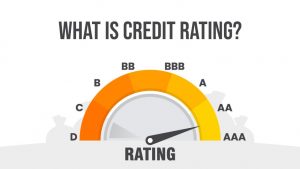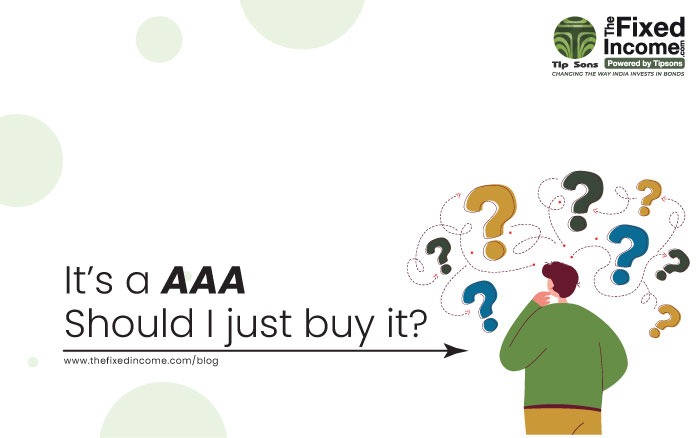‘Oh! I just heard of another scam’, Well, hearing this phrase in Global economy is
more frequent than it ever should have been. You as an investor wouldn’t ever be
completely aware of what might hit you next in these turbulent times, however,
there’s really no harm in being prepared.
In terms of safety and stability of funds, investing in bonds is generally considered to
be safer as compared to other asset classes. Investors should always make a
concoction of various investments as per his risk appetite and prevailing market
scenarios.
Returns on different kinds of bonds usually differs on basis of tenure, liquidity, safety,
credit rating etc. Now a question will pop in your head that what is credit rating and
who allocates the same. Let us understand the basics of rating and its different
aspects.
What is Credit Rating?
A rating agency evaluates the creditworthiness of companies and government
entities, especially their potential to meet principal and interest payments on their
debts. The rating assigned gives an idea about the organization’s level of confidence
that the borrower will be able to pay its debt obligations as agreed.
In simple words, poor credit rating indicates higher risk because there are great
chances that the entity will default in its payment and vice versa.


Credit Rating Agencies in India-
The Indian Credit Rating industry is regulated by SEBI (Credit Rating Agencies)
Regulations, 1999 of the Securities and Exchange Board of India Act, 1992. It is
highly concentrated among total of these seven recognized credit agencies in India
which are –
- Credit Rating Information Services of India Limited (CRISIL)
- Credit Analysis and Research Limited (CARE)
- Investment Information and Credit Rating Agency (ICRA)
- SMREA Rating Limited
- Brickwork Ratings India Pvt Limited
- India Rating and Research Pvt. Ltd.
- Infometrics Valuation and Rating Pvt. Ltd.
Credit agencies analyze the company/ Government entities on basis of financial
statements, type of debt, duration, lending and borrowing history, past data,
repayment capacity, etc. and thereafter assign rating to borrowing on the basis of
which the investor can evaluate and make an informed decision.
Grades of Rating Agency
A credit rating is just an opinion on an issuer’s ability and willingness to honour its
financial obligations on the rated debt instrument on time. The rating is neither an
opinion just a relative measure on the issuer’s general performance nor is it an
opinion on the likely future price of the rated bonds.
Further, after assignment it continuously monitors the credit quality and notifies the
investors of the same.
Credit Rating agency customarily gives alphanumeric ratings from AAA (Most safe)
to D (Least safe) based on the security and safety of the instruments. This can be
understood better with help of credit rating table given by CRISIL for bonds:
| Rating | Description (In regard to honoring debt obligations) |
| AAA | Highest degree of strength |
| AA | High degree of strength |
| A | Adequate degree of strength |
| BBB | Moderate degree of strength |
| BB | Inadequate degree of strength |
| B | High Risk and greater susceptibility |
| C | Substantial Risk with regard to honoring debt obligations. |
| D | Entity is in Default of some or all of its debt obligations. |
Credit ratings may have +(plus)/ -(Minus) modifiers for ratings from AA to C to reflect
comparative standing within the category. To put it in simple perspective, ratings
from AAA to BBB are considered as investment grade bonds and BB to SD are
considered non-investment grade or junk bonds.
So, should you invest directly into AAA rated bonds?
AAA bonds are generally considered as the safest instruments and are most liquid in
terms of volume too. Barring couple of events like DHFL & ILFS, AAA rated bonds
have done well in long history of Bond market. However, to avoid DHFL/ILFS kind of
event, one should also understand the instrument and financial strength of the issuer
before making any investment decision.
Conclusion
Before you start this investment journey or if you have started one, it would be
prudent that investor should not just heed on credit ratings as it is simply an opinion
given by Credit Rating Agency and should not be used in isolation.
It rather should use it as strainer to identify quality bonds and thereafter dig deeper
into other bond barometers like checking the IM and other issuance documents
along with financial statements, Audit Reports, Board Reports, Press Releases etc.
before investing their hard-earned money (You can download all related documents here.
At the end I would just like to remind famous quote of Peter Lynch-
“Know what you own, and know why you own it”.
Which means do your homework before making a decision. Once you made a
decision, make sure to re-evaluate your portfolio on a timely basis. A wise holding
today may not be a wise holding in the future.
In case any further information or if you want conceptual clarity on any other topic,
please post the same in comments below.
























